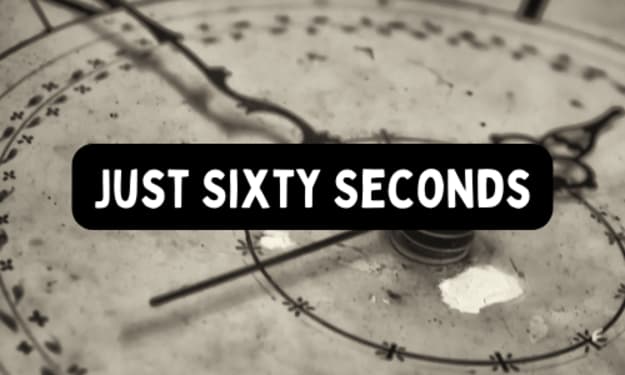For Better or For Worse
3 reasons people tie the knot — in 1950, and today

My parents are celebrating their 70th wedding anniversary this month!
There are not very many statistics on how many couples reach their 70th wedding anniversary but it seems clear, not very many do. At eighteen years old, my mother looked at my dad and made him the happiest man on earth by saying, I do.
My parents married in 1950, a new decade of hope on the horizon with a rising US economy following WWII.
For better or for worse
Her options in 1950 were limited by today’s standards. My mother once spoke about either joining a convent or working as a nurse or secretary. Both jobs were considered ‘suitable’ for a woman. Until she married.
Today, I look at my 18-year-old daughter and see the whole world in front of her. School. Education. Travel. Friends. Career. Marriage is far, far down the list. Not only in my mind but in hers.
If my daughter came to me tomorrow announcing plans to marry, I would consider it a foolish move. Throwing her life away.
In 1950, the day my mom wed my dad, her life began.
At eighteen years old, my mother and my daughter are literally worlds apart.
So, how did our view of marriage change?

Three main reasons people tied the knot.
1. Economic stability and social status.
Centuries ago, kings and royalty married off their daughters to form alliances with other kingdoms. A purely business transaction.
But this type of alliance surfaced among the lower classes too, marrying for an accumulation of land, capital, or simply stability in life. Women held a lower social status than men bringing with them into the marriage, a dowry, and a promise her husband would provide and take care of her.
Elizabeth Bennet, the heroine in the 1813 novel Pride and Prejudice by Jane Austen, is encouraged by her mother to marry well and to secure her future by marrying a wealthy man. Austen addresses the societal themes of marriage and class in the opening and most famous line of her novel.
It is a truth universally acknowledged, that a single man in possession of a good fortune, must be in want of a wife.
Money and marriage, being associated with social status prevailed into 1950 when my parents wed. The notion women needed to marry to be taken care of, to avoid becoming a spinster and a burden on family was very real. A woman’s role became homemaker and mother.
My mom followed suit. The traditional union was a relationship based on a power differential. Men were the bread-winners.
Women had very few options open to them. If they did work or attend college it was generally presumed they would do so only until they became someone’s wife. For many women, all roads led to marriage. Just like for Elizabeth Bennet, it secured their future.
2. But did they marry for love?
First comes love, then comes marriage, then comes baby, in the baby carriage. This is a well-known nursery rhyme, depicting the natural order of courtship, well at least in the 1950s.
Post WWII, with the economy surging, saw an uptick in matrimonial unions. Many only spanning a six-month engagement period, as was customary, before settling down. A rather small window of time to get to know the person you are vowing to spend the rest of your life with.
For many, this perhaps became a disillusionment. For my parents, they seemed to find a way to traverse the highs and lows, making their marriage work. That deserves much credit.
But love was in the air after the great war. The societal viewpoint shifted off an emphasis on wealth to a focus on love and attraction.
I am sure my parent's love has changed and morphed over the years. How could it not? Anyone in a long term relationship knows the excitement of ‘falling in love’ fades into hues of a deeper love.
There is a certain stability accompanying this kind of love. My parent’s banked on it. They did not always have much money but they built a life together, for better or for worse.
3. And then came baby, or babies…
Another reason people get married is to start a family, at least traditionally. Sometimes the order of the nursery rhyme mixes up and begins with the baby followed by marriage.
But not in the case of my parents. Their family life began exactly 40 weeks after their wedding day. They repeated this seven more times to round out a family of eight children. I fall in line at the end, being the youngest.
As a mother, I like to think of my children as my life’s work. I believe my mother feels similarly, or at least leaving her legacy through her kids. My parents modeled traditional marriage. My father worked and provided while my mother stayed home, tended the house, and raised the kids.
Only a generation later, these boundaries of roles began to shift.
By the 1970s more middle-class women, whose main role had been as homemaker, chose to work outside the home, finding fulfillment in job satisfaction and family life. Birth control became a viable option for women, allowing them a choice in family planning. Marriage forged a new path. It began to look more like a contract between two equal partners seeking love, stability, and happiness.
A wedding today may outwardly resemble the romantic day, with all the pomp and circumstance my parents experienced in 1950, but the concept of marriage itself has grown more equitable.
It is far more common for both men and women, to wait before getting married. There can be a greater emphasis on achieving a college education and becoming sustainable in a career, especially in young women. This alone changes the equality in a relationship, even when women statistically still earn less than men.
Financial burdens certainly are softened when shared, so in some sense, the economic factor for marriage still exists, just not as prominently as for Elizabeth Bennet. If she lived today, she would hold her own bank account.
And a modern Mr. Darcy, married to Elizabeth Bennet may join the 17% of stay-at-home dads, while his wife earned the bread, and butter.
As for love. Love is love, found in all manner of shapes and sizes. It still plays a vital role, however, we define the meaning of marriage. A marital union can be defined as an equitable and mutual contract between two people. It comes in a variety of forms; living together, same-sex, common law. Love is the binding ingredient. Love makes it all the richer.
We are all looking for love in our lives. My hope for my children is they fill up their lives with it and find happiness. And then give me grandchildren!
At eighteen years old, my mother and my daughter are literally worlds apart.
A marriage spanning 70 years may seem like a novelty. Maybe it is in how you look at it.
Happy Anniversary Mom and Dad!!
__________________________________________________
Stay in touch and receive similar stories and tales from MaryRose directly to your inbox, here
MaryRose
believes in Meraki, which is what happens when you leave a piece of yourself, your soul, creativity, or love, in your work. When you love doing something, anything, so much that you put something of yourself into it. Or follow me on my website MaryRoseDentonWriter.
With much gratitude,
MaryRose
About the Creator
MaryRose Denton
MaryRose Denton lives between mountains and water.
She believes in Meraki. That thing that happens when you leave a piece of your soul,in your work. When you love doing something, anything, so much that you put something of yourself into it.







Comments
There are no comments for this story
Be the first to respond and start the conversation.